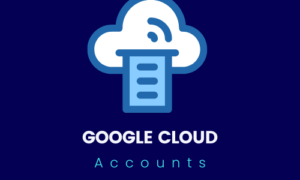Amazon AWS provides scalable cloud computing services for businesses of all sizes. This platform offers a range of services including computing power, storage options, and networking capabilities. AWS allows companies to scale their operations efficiently, handling fluctuating demands with ease.
It’s popular for its reliability, security features, and extensive global infrastructure. Users can choose from various pricing models to fit their specific needs. By setting up an AWS account, you gain access to a vast ecosystem of tools and resources, enabling innovation and growth. Whether you’re a startup or a large enterprise, AWS can support your cloud computing requirements seamlessly.
The Importance Of Amazon Aws
Amazon AWS is a big name in cloud computing. It has changed how businesses work. AWS provides many services that help companies grow. Let’s explore why AWS is so important today.
Dominance Of Aws In Cloud Computing
AWS leads the cloud market. It controls a big share of the market. This makes it a reliable choice for many. AWS offers more services than other cloud providers.<p
Here is a comparison of market shares:
| Provider | Market Share |
| Amazon AWS | 33% |
| Microsoft Azure | 20% |
| Google Cloud | 9% |
Benefits For Businesses And Developers
Using AWS has many perks. Businesses and developers gain a lot from it. Here are some key benefits:
- Scalability: AWS scales resources as needed. This means you only pay for what you use.
- Reliability: AWS offers high uptime. This ensures your services are always available.
- Security: AWS provides top-notch security features. This keeps your data safe.
- Flexibility: AWS supports many programming languages. This makes it easy to integrate with other tools.
- Cost-Effective: AWS offers a pay-as-you-go model. This helps businesses save money.
Many developers love AWS for its robust features. It simplifies complex tasks. This allows them to focus on innovation.
Types Of Aws Accounts To Consider
Amazon Web Services (AWS) offers various account types to suit different needs. Whether you are just starting or a seasoned developer, there is an AWS account for you. Let’s explore the main types of AWS accounts to consider.
Free Tier Accounts: A Test Drive Of Aws Services
The Free Tier account is perfect for beginners. It allows you to explore AWS services without any cost. With the Free Tier, you get access to several AWS services for free.
- EC2: 750 hours per month
- S3: 5 GB of storage
- RDS: 750 hours of usage
These limits help you test and learn about AWS. The Free Tier lasts for 12 months. After this, standard charges apply. Make sure to monitor your usage to avoid unexpected costs.
Paid Accounts
Paid accounts offer complete access to AWS services. These accounts are ideal for businesses and advanced users. You pay for what you use, with no upfront costs. This flexibility allows you to scale resources as needed.
| Feature | Free Tier | Paid Account |
| EC2 Instances | 750 hours/month | Unlimited |
| S3 Storage | 5 GB | Unlimited |
| RDS Usage | 750 hours/month | Unlimited |
Paid accounts also offer advanced support options. You can choose different support plans based on your needs. These plans provide faster response times and expert assistance.
- Basic Support
- Developer Support
- Business Support
- Enterprise Support
Paid accounts are best for those who need reliable and scalable cloud solutions. They provide the flexibility to grow your business without limitations.
Steps To Purchase An Aws Account
Account Creation:
First, visit the Amazon AWS website. Click on the “Create an AWS Account” button. Enter your personal information, including:
- Name
- Email Address
- Password
Next, set your preferences. Choose your account type: personal or business. Fill in your contact information accurately. Select your payment method, like credit card or bank transfer.
Verification Process:
After entering your information, verify your email. AWS will send a verification link. Click the link to verify your email address.
AWS requires phone number verification. Enter your phone number and select the call or SMS option. AWS will send a code to your phone. Enter this code on the website.
Complete the payment verification. AWS may make a small charge to your card. This charge ensures your payment method is valid.
Finally, select a support plan. AWS offers different support levels. Choose the one that fits your needs. Your account is now ready for use!
Setting Up Your Aws Account For Success
Amazon Web Services (AWS) offers powerful cloud solutions. Setting up your AWS account correctly ensures optimal performance. Follow these steps to configure your account for success.
Best Practices For Initial Configuration
Start by creating a secure AWS account. Use a strong password and enable multi-factor authentication (MFA). This adds an extra layer of security.
Next, set up Identity and Access Management (IAM) users. Do not use root credentials for daily tasks. Create individual IAM users with specific permissions.
Organize your resources with tags. Tags help you categorize and manage resources efficiently. Use consistent naming conventions for easy identification.
Consider using AWS Organizations if you manage multiple accounts. It allows centralized management and consolidated billing.
Billing And Cost Management
AWS offers various tools for cost management. Enable billing alerts to stay informed about your spending. Set up budgets to monitor costs and avoid surprises.
Use the AWS Cost Explorer to analyze spending patterns. It provides detailed insights into your usage and costs.
| Cost Management Tool | Description |
| Billing Alerts | Notifications when spending exceeds thresholds |
| Budgets | Track and manage costs effectively |
| Cost Explorer | Analyze spending and usage trends |
Utilize AWS Trusted Advisor for cost optimization. It provides recommendations to reduce costs and improve performance.
- Review unused resources and terminate them.
- Identify underutilized instances and resize them.
- Consider reserved instances for predictable workloads.
Regularly monitor your billing dashboard. It helps you stay on top of your AWS expenses.
Security Measures For Your Aws Account
Keeping your AWS account secure is crucial. Amazon Web Services (AWS) offers various tools and features to enhance security. This section discusses essential security measures for your AWS account.
Multi-factor Authentication
Multi-Factor Authentication (MFA) adds an extra layer of security. It requires two forms of identification. Typically, these are your password and a verification code. The verification code is sent to your mobile device.
To enable MFA:
- Sign in to your AWS Management Console.
- Go to the IAM dashboard.
- Select Users and choose your username.
- Click on the Security credentials tab.
- Under Assigned MFA device, click on Manage.
- Follow the instructions to set up your MFA device.
MFA significantly reduces the risk of unauthorized access. It ensures only you can access your AWS account.
User Permissions And Aim Roles
Managing user permissions is crucial for security. AWS Identity and Access Management (IAM) helps you control access. IAM allows you to manage permissions for users and roles.
Key steps to manage permissions:
- Create individual IAM users for each person.
- Assign users to groups with specific permissions.
- Use IAM roles for applications running on AWS.
- Regularly review and update permissions.
IAM roles offer temporary permissions. They are ideal for tasks that need short-term access. This minimizes the risk of long-term exposure.
Table of common IAM roles and permissions:
| Role | Description | Permissions |
| Admin | Full access to all resources | All permissions |
| Developer | Access to development resources | Create, update, delete |
| Read-Only | View resources without changes | Read-only permissions |
These measures ensure your AWS account remains secure. Implementing MFA and managing IAM roles protect your resources effectively.
Maintaining And Monitoring Aws Account Health
Maintaining and monitoring your AWS account health is crucial. It ensures smooth operations and security. Here, we discuss key practices to keep your AWS account in top shape.
Regular Audits And Compliance Checks
Regular audits help identify potential issues. They ensure your AWS account remains compliant with industry standards. Conduct these checks at least monthly.
| Audit Type | Description | Frequency |
| Security Audit | Checks for security vulnerabilities | Monthly |
| Cost Audit | Analyzes spending and cost efficiency | Quarterly |
| Compliance Audit | Ensures adherence to standards | Annually |
Use AWS tools for these audits:
- AWS Trusted Advisor: Provides real-time guidance.
- AWS Config: Tracks resource configurations.
- AWS CloudTrail: Logs account activities.
Utilizing Aws Cloud watch For Real-time Monitoring
Cloud Watch monitors your AWS resources. It provides real-time data and alerts. Setting up CloudWatch is simple and effective.
- Create Alarms: Set thresholds for resource usage.
- Enable Logs: Collect log data for analysis.
- Use Dashboards: Visualize performance metrics.
Cloud Watch features include:
- Metrics: Tracks resource performance.
- Logs: Collects and stores log data.
- Events: Responds to system changes.
By integrating Cloud Watch, you gain insights into your AWS environment. It helps in proactive issue resolution.
Scaling Your Aws Services
Scaling your AWS services is crucial for business growth. AWS offers flexible plans that can grow with your needs. Learn when to upgrade your plan and manage resources efficiently.
When To Upgrade Your Aws Plan
Upgrading your AWS plan depends on your usage and needs. Monitor your resource usage regularly. If you notice performance issues, it may be time to upgrade. Look for these signs:
- High latency or slow response times
- Increased customer traffic
- Frequent resource limits
- Need for advanced features
Upgrading your plan can offer better performance and features. AWS provides various plans to suit different needs. Choose the one that fits your business best.
Managing Resources Efficiently During Scale-up
Efficient resource management is key during scale-up. Use AWS tools to monitor and optimize your resources. Some useful tools include:
- Amazon Cloud Watch: Monitor your resources in real-time.
- AWS Auto Scaling: Automatically adjust capacity to meet demand.
- AWS Cost Explorer: Track and optimize your spending.
Use these tips to manage resources efficiently:
| Tip | Description |
| Set Budgets | Define spending limits to avoid overspending. |
| Use Reserved Instances | Get discounts by committing to long-term use. |
| Analyze Usage | Identify and stop unused resources. |
Common Pitfalls To Avoid With Aws Accounts
Using Amazon AWS accounts can be very beneficial. But many users face common pitfalls that can lead to serious issues. Knowing these pitfalls can help you avoid them. This section will cover two major pitfalls: inadequate security practices and unexpected costs and budget overruns.
Inadequate Security Practices
Security is crucial for any AWS account. Many users fail to set strong passwords. Weak passwords make it easy for hackers to gain access. Use a mix of letters, numbers, and symbols in your passwords.
- Enable Multi-Factor Authentication (MFA)
- Use IAM roles and policies
- Regularly rotate your access keys
Never share your AWS credentials. Sharing credentials can lead to unauthorized access. Use Identity and Access Management (IAM) to control permissions. Give each user the minimum permissions they need.
Monitor your account for unusual activity. Use AWS Cloud rail for logging. This helps you track all actions in your account. Set up alerts for suspicious activities.
Unexpected Costs And Budget Overruns
Many users face unexpected costs with AWS. They do not monitor their usage. AWS charges based on usage, so costs can add up quickly. Set a budget and stick to it.
- Use AWS Cost Explorer to track spending
- Set up billing alerts
- Review your usage regularly
Choose the right pricing model. AWS offers various pricing models such as on-demand, reserved instances, and spot instances. Select the one that best fits your needs. Optimize your resources to avoid paying for unused services.
Turn off resources when not in use. Many users forget to stop instances. This leads to unnecessary charges. Automate start and stop actions to save costs.
| Action | Benefit |
| Set Budget Alerts | Avoid unexpected charges |
| Monitor Usage | Track spending in real-time |
| Optimize Resources | Save on unnecessary costs |
By following these tips, you can avoid common pitfalls with AWS accounts. Protect your account with strong security practices. Monitor your spending to prevent budget overruns.
Future-proofing Your Aws Investment
Investing in an AWS account is a smart move. AWS offers flexible, scalable, and secure cloud solutions. To make the most of your investment, consider future-proofing it. This ensures your AWS environment remains relevant and efficient.
Staying Updated With Aws Innovations
AWS constantly evolves. New services and features are added regularly. Staying updated with these innovations is crucial. Here are some tips:
- Subscribe to AWS newsletters.
- Follow AWS blogs and forums.
- Attend AWS events and webinars.
- Join AWS user groups.
These actions help you stay informed. They allow you to leverage new features and improve your cloud environment.
Building A Scalable And Resilient Cloud Architecture
Building a scalable and resilient architecture ensures your AWS environment can grow. It also protects against failures. Consider these key aspects:
| Aspect | Action |
| Scalability | Use Auto Scaling to adjust capacity. |
| Resilience | Implement Multi-AZ deployments. |
| Monitoring | Use Cloud Watch for real-time monitoring. |
| Security | Implement strong IAM policies. |
How Do I Buy An Aws Account?
To buy an AWS account, visit the AWS website. Click “Create an AWS Account. ” Follow the on-screen instructions. Provide payment details. Verify your identity. Your account is now ready.
Does Amazon Charge For Aws Account?
Amazon does not charge for creating an AWS account. You pay only for the resources you use. AWS offers a free tier with limited usage for new users.
How Much Does Aws Cost For Personal Use?
AWS costs for personal use vary. The Free Tier offers limited free services for 12 months. Beyond that, costs depend on usage. Basic services start at a few dollars per month.
Is Aws Account Free For 1 Year?
Yes, AWS offers a free tier for 12 months. It includes limited access to various services.
Conclusion
Investing in an Amazon AWS account can transform your business. It offers scalability, security, and cost-efficiency. By choosing AWS, you ensure reliability and top-notch performance. Don’t miss out on the advantages. Make the smart move and elevate your operations with AWS today.





Reviews
There are no reviews yet.